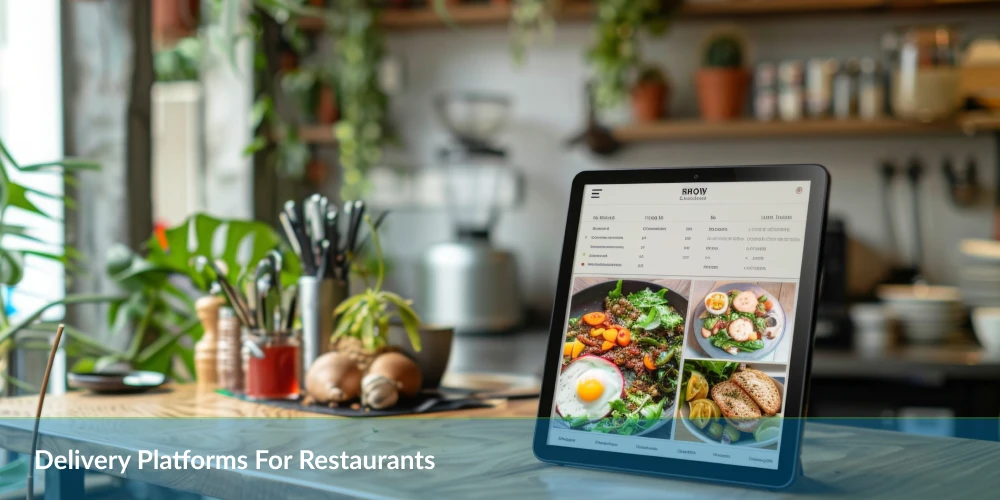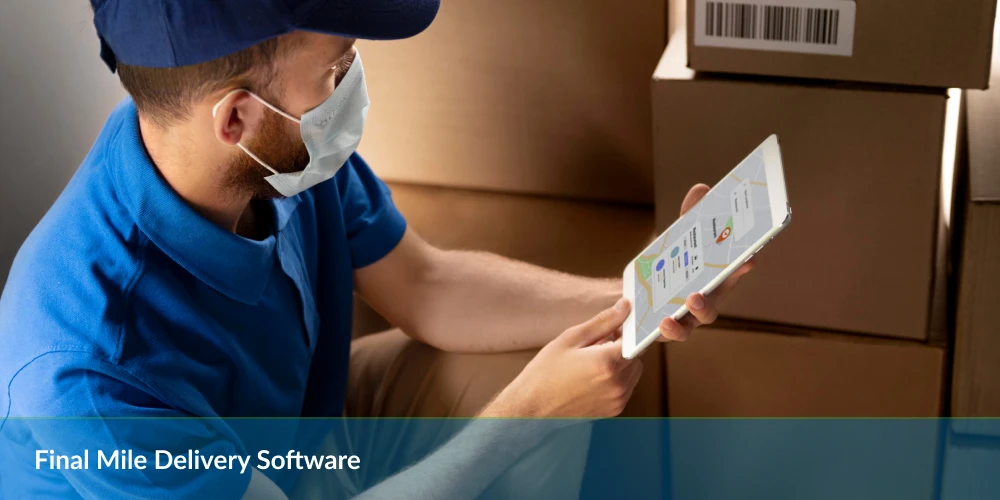Table of Contents
In 2023, technology will be the knight in shining armor for the logistics industry. The logistics industry is facing unique challenges as the world continues to navigate the aftermath of the Covid-19 pandemic. But fear not, for technology is stepping up to the plate to boost growth and productivity, all while ensuring safety for consumers, clients, and drivers.
Logistics businesses grapple with supply chain difficulties, driver shortages, and retention problems. Other pressing concerns include compliance, safety, accountability, congestion and delays at customer facilities, vehicle capacity management, and driver fatigue.
The logistics industry is seeking technological solutions to modern-day delivery problems. One promising solution is the use of delivery management software. These robust platforms come in handy when streaming location and vehicle information, enabling real-time tracking of fleets, managing maintenance checks, and delivering shipments. In addition, by considering factors such as speed, traffic, weather, and more, accurate predictions can be made about arrival times.
Delivery management systems like NetworkON can readily integrate your existing technology stack to automate operations, create faster check-in and check-out processes, and enable shorter turnaround times. In the case of white-glove deliveries and transportation of large and bulky goods from warehouses, automation plays an integral role in increasing efficiency. Automated inventory progress is much faster and more accurate than manual processes, offering transparency to improve pick-up and drop-off efficiency.
How Delivery Management Software Makes the Lives of Delivery Partners Easier
Delivery management technology is a valuable tool for drivers. It allows them to streamline their routes, communicate with dispatch and customers, and access important information in real time. In addition, logistics and last-mile delivery businesses can leverage delivery management technologies in various ways. Some of them include the following.
- Automating the job allocation process with clear addresses on digital devices to reduce confusion
- Generating accurate ETAs for orders into the system and communicating it to the customers
- Using AI-powered capabilities to generate the most efficient routes for the driver
- Reducing delivery costs by saving drivers significant amounts of time and fuel
- Decreasing the amount of wear and tear on their vehicles with regular checks
- Giving delivery partners the ability to communicate with dispatch and customers in real-time
- Enabling push notifications for updating the status of a delivery job and making it visible to the dispatch team and customers in real-time
- Orchestrating digital proof of delivery for promoting transparency and accountability during a delivery
Delivery management technology also allows drivers to access important information, such as delivery instructions, customer contact information, and delivery history, all in one place. This can save drivers time and reduce the risk of errors, as they no longer have to rely on paper documents or multiple systems.
The Rise of Real-Time Package Tracking
In today’s fast-paced world, the ability to track parcels in real-time is no longer a convenience but a necessity. Real-time package tracking represents a significant leap forward in delivery management, offering numerous benefits for businesses and their customers.
Benefits of Real-Time Visibility for Businesses and Customers
Real-time visibility empowers businesses to provide superior service, reducing the anxiety of waiting and uncertainty that can come with package shipments. On the other hand, customers appreciate the transparency, as it allows them to plan their schedules around anticipated deliveries.
How Real-Time Tracking Integrates with DMS
Integrating real-time tracking capabilities into Delivery Management Software (DMS) not only simplifies the logistics but also enhances the overall efficiency of the shipping process. This integration offers dispatchers and fleet managers the comfort of accurately tracking each parcel’s journey from the warehouse to the recipient’s doorstep.
Impact on Customer Satisfaction
When customers can track their packages every step of the way, their trust in the service provider grows. This transparency is critical in boosting customer satisfaction and loyalty, which is paramount in today’s competitive market.
The rise of real-time package tracking is revolutionizing the delivery landscape, proving an indispensable feature of modern Delivery Management Software. By ensuring visibility, enhancing integration, and improving customer satisfaction, businesses are able to stay ahead in the logistics game.
Seamless Integration with Existing Systems
When considering Delivery Management Software (DMS), it’s crucial to understand how smoothly it can become a part of your current workflow. The goal here is a seamless integration that feels like a natural extension of your existing operations rather than a disruptive add-on.
Ease of Incorporating DMS into Current Operations
Transitioning to a new system can often be daunting. However, top-tier DMS solutions are designed with ease of integration in mind. That means you can incorporate them into your business with minimal disruption, allowing you to continue your operations without skipping a beat.
Compatibility with Other Platforms and ERPs
Worried about playing well with the tools you already use? The best delivery management systems are like social butterflies-they get along with everyone. Whether relying on legacy software or the latest Enterprise Resource Planning (ERP) system, a robust DMS can bridge the gap, creating a unified toolset.
Reducing the Learning Curve for Staff
Your staff might be apprehensive about adapting to new software. But here’s the good news: modern delivery management platforms are designed with user-friendliness in mind. With intuitive interfaces and familiar features, training time can be significantly reduced, which means your team will be up and running as quickly as possible.
- Intuitive Interfaces: Reduces the need for extensive training.
- Help Guides & Support: Assists staff in overcoming any initial hurdles.
- Gradual Implementation: Allows your team to transition at a comfortable pace.
Safety of the Delivery Partners on the Road
Finally, with optimized routes and all the capabilities discussed above, drivers improve their safety on the road. How? Tracking and analyzing driver behavior, such as speeding and harsh braking, can be used to improve training and promote safer driving practices.
With detailed driver schedules available with the dispatch staff, they can restrict drivers with fatigue from receiving new jobs. Driving a vehicle when fatigued poses a significant risk to the driver and other road users. It can impair a person’s ability to focus, react quickly, and make safe decisions, all of which are critical skills for safe driving.
One of the most significant risks associated with driving when tired is the increased crash risk. Studies have shown that fatigue is a prominent contributor to motor vehicle accidents and that the risk of a crash increases as a person becomes more tired. In addition, it is common for drivers to have difficulty staying in their lane, maintaining a consistent speed, and responding to unexpected events on the road.
Final Thoughts
Don’t let supply chain challenges slow down your pickup and delivery business. Instead, start using NetworkON today and experience the benefits of increased driver efficiency, streamlined compliance adherence, and real-time tracking for all your deliveries. Schedule a demo with our experts today to see how NetworkON can transform your delivery business and help you scale it up to the next level.
For more information about our product and services, email us at info@networkon.io. You can learn more about NetworkON features here or visit our website for additional information.
Frequently Asked Questions:
Q. What challenges does the logistics industry face in 2024?
The logistics industry is grappling with challenges such as supply chain difficulties, driver shortages, retention problems, compliance issues, safety concerns, congestion, delays at customer facilities, vehicle capacity management, and driver fatigue.
Q. How can technology address modern-day delivery problems?
One promising solution is delivery management software, like NetworkON, which streamlines location and vehicle information, enables real-time tracking, manages maintenance checks, and optimizes delivery routes by considering speed, traffic, and weather.
Q. How does delivery management software benefit delivery partners?
Delivery management technology allows delivery partners to streamline routes, communicate in real-time with dispatch and customers, automate job allocation processes, generate accurate ETAs, reduce delivery costs, and access important information all in one place.
Q. What is the significance of real-time package tracking in the logistics industry?
Real-time package tracking provides transparency, reduces anxiety for customers waiting for shipments, enhances overall efficiency, and positively impacts customer satisfaction. It’s considered a necessity in today’s fast-paced delivery landscape.
Q. How does real-time tracking integrate with Delivery Management Software (DMS)?
Integrating real-time tracking capabilities into DMS simplifies logistics, enhances efficiency, and allows dispatchers and fleet managers to accurately track each parcel’s journey from the warehouse to the recipient’s doorstep.
Q. How seamlessly can Delivery Management Software integrate into existing operations?
Top-tier DMS solutions are designed for seamless integration, ensuring minimal disruption to current workflows. They are compatible with various platforms and ERPs, reduce the learning curve for staff, and offer intuitive interfaces for ease of use.
Q. How does DMS contribute to the safety of delivery partners on the road?
DMS optimizes routes, tracks and analyzes driver behavior, and helps restrict fatigued drivers from receiving new jobs. This enhances overall safety by improving training, promoting safer driving practices, and reducing the risk of accidents associated with tired driving.
Q. How can NetworkON benefit my delivery business?
NetworkON offers increased driver efficiency, streamlined compliance adherence, and real-time tracking for all deliveries. By addressing supply chain challenges, it helps scale up your delivery business. Schedule a demo with our experts today to experience the transformation. For more information, contact us at info@networkon.io or visit our website.





Тркеу
Your article helped me a lot, is there any more related content? Thanks!